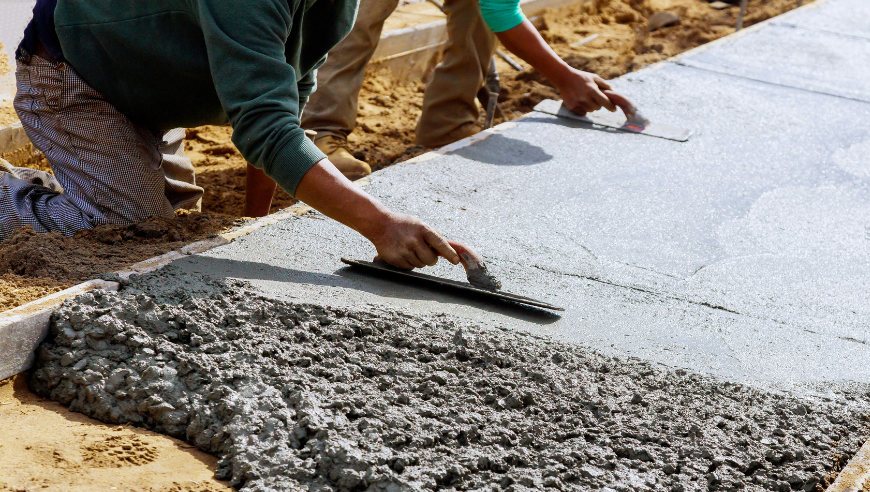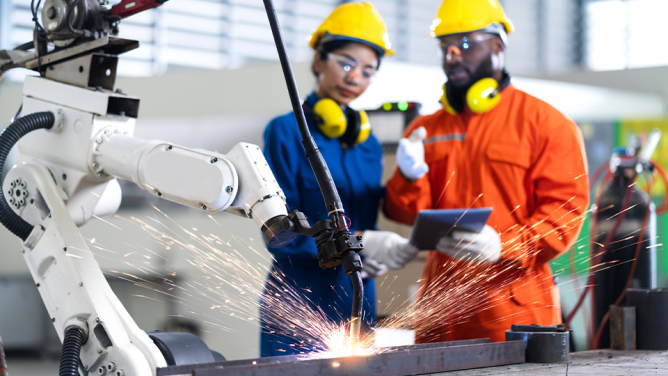This article is from the 2024 yearbook: “Innovation has found its bearings.” We have designed this annuel review to inspire you and spark new vocations in the service of transforming cities and territories. Happy reading!
Concrete spearheading the transition
Global concrete production represents around 2.9 gigatons of CO2 emissions per year. It is by far the most polluting construction material, yet it is also the one on which the most significant decarbonisation gains could be made. Right now, there are three solutions that are shaping the future of low-carbon concrete.
The first is to reduce the amount of clinker used (which is the main binder of concrete) in cement. Clinker production is in fact responsible for the majority of carbon emissions from cement plants, with traditional cements still being composed of 95% of clinker. According to the IEA, reducing the proportion of clinker in cement to 60% would reduce current CO2 emissions in the sector by 35%.
The second option consists purely and simply of replacing traditional cement as a concrete binder. Alkali-activated alternatives, geopolymers or calcium sulfoaluminate cements currently promise emission reductions of around 90%, but they have yet to demonstrate their performance and their ability to scale up. Finally, by transforming industrial processes, especially through carbon sequestration at factory level, significant CO2 emission reductions from concrete could be achieved.

Smart materials
Having long been restricted to being used only in demonstrations, smart materials are now set to develop. For example, shape memory materials can be deformed to the extreme and are widely used in the aerospace and healthcare industries, yet they are struggling to make a name for themselves in construction. Applications for certain materials are still in the experimental stage, playing around with the laws of thermodynamics. This is the case for UE Power’s solar coating, which when applied, transforms a window into a working solar panel!
Its piezoelectric properties are also promising, enabling us to envisage materials capable of generating electricity from mechanical stress, such as
the vibrations of a building.
The main challenge now involves moving away from experimentation to scale up and roll out solutions.
Biomimicry, or nature’s R&D
Nature proves to be an inexhaustible source of inspiration for the construction world. Biomimicry is based on millennia of nature’s R&D, enhancing certain properties found in the living world. A startup like Strong by Form offers ultra-light composite materials inspired by the natural fiber alignment in trees. The hydrophobic properties of lotus leaves have inspired the construction sector to create low-maintenance surfaces. Equally fascinating are self-healing concretes, which harness the properties of certain bacteria to mineralize calcite, making them the focus of various research programs.
Innovating reuse potential
Most of the time, resource reuse does not offer up particularly innovative materials. However, what does deserve a mention is the innovative ways in which they’re being used. Apps like R.Used, developed and used internally by VINCI, aims to become the marketplace for the reuse of construction site materials. IaaS (Infrastructure as a Service) models are also gaining ground. By making the project manager the building manager for an agreed duration, it fosters the use of high-quality, sustainable and low-maintenance materials. It also encourages buildings to be designed with disassembly and deconstruction in mind.
The challenge of scaling up
Innovative materials are now becoming more and more mature. Circular solutions exist and are proving to be effective. The main challenge now entails moving away from experimentation and Proof of Concept to scale up, roll out the solutions and see a significant environmental impact. However, a certain number of obstacles still need to be removed to achieve this.
Regulatory levers Right now, regulations are being reworked in two ways: The first is to simplify and clarify. The lack of clarity surrounding materials is regularly cited as an obstacle when trying to roll out a circular economy and innovative materials. The second, which is currently being structured, involves introducing incentive regulations.
To go further :
Check out our study published in partnership with Circul’R on scaling up the circular economy in construction and infrastructure: here.
Leonard has also published, in partnership with Hello Tomorrow, a two-part report on innovative materials: 1. A section on low-carbon concretes. 2. Another on the development of new materials with remarkable properties. Find it here.



